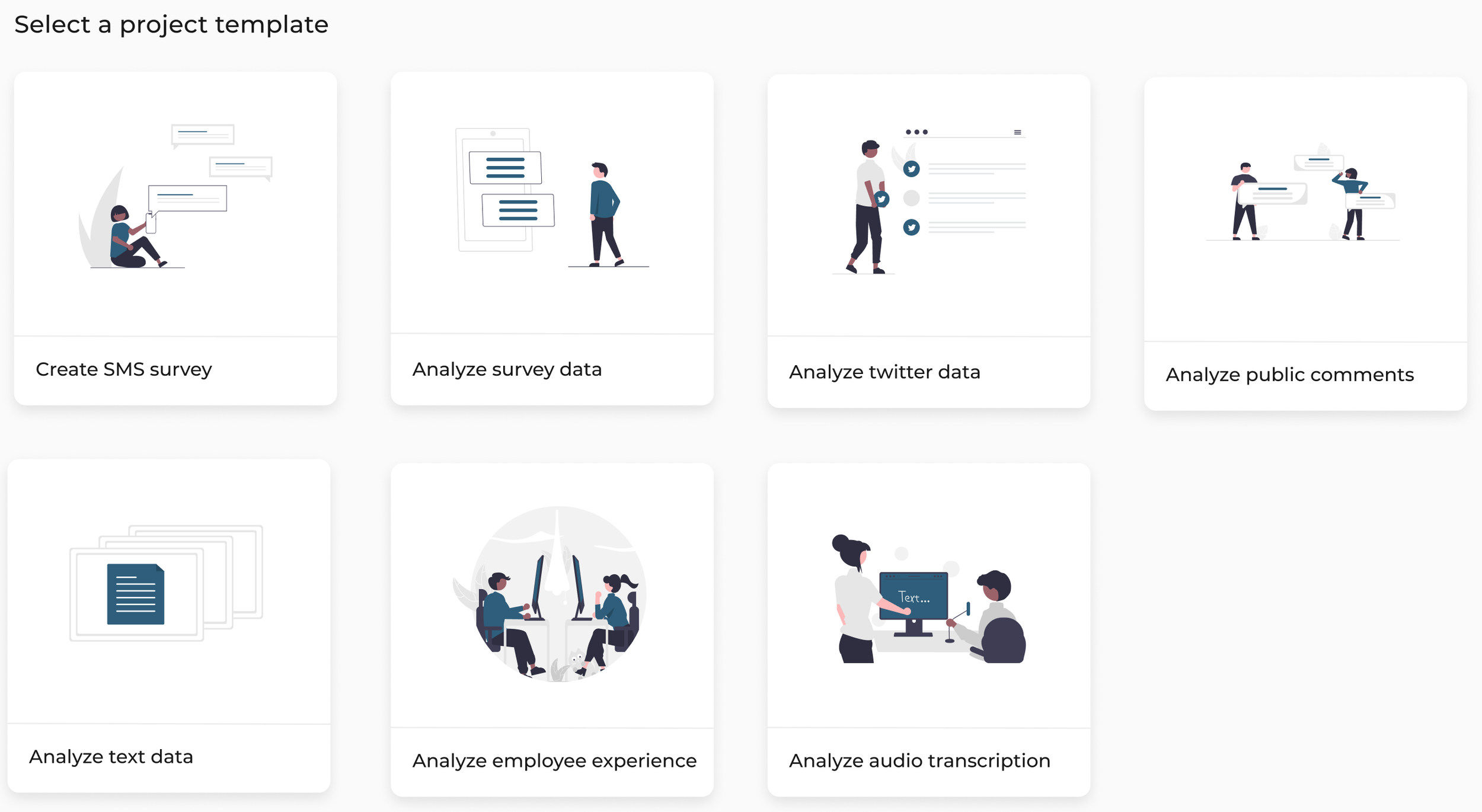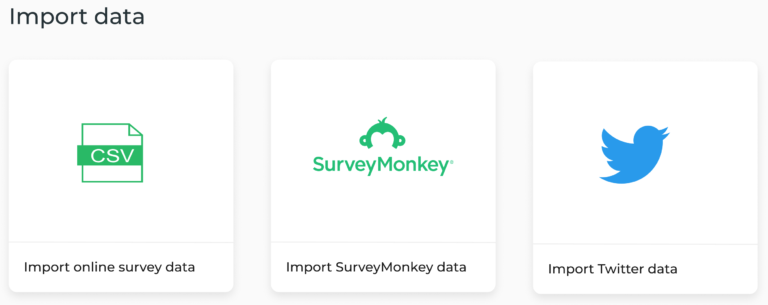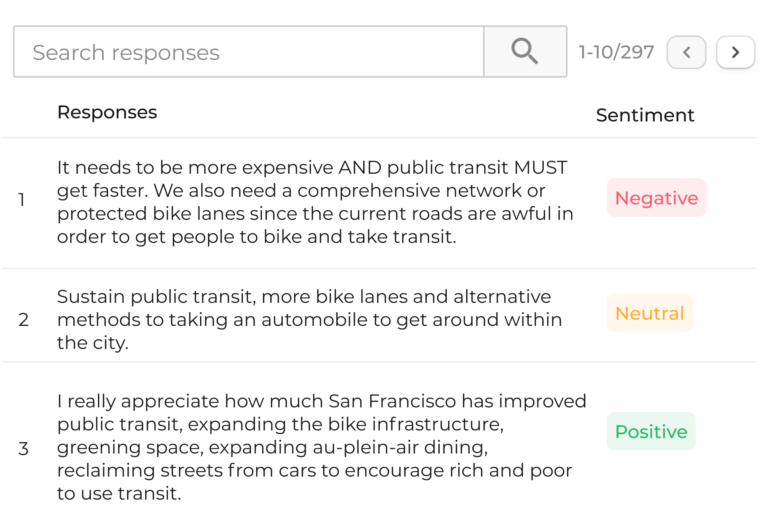Building a solution to understand lived experiences
Our mission is to empower communities by transforming their voices and feedback into insights for teams to better understand the human experience. Starting today, get to your insights faster with the launch of co:census 3.0.
Simplify text analysis with templates

Discover our new templates, tailored to different use case scenarios and equipped with pre-made text analysis dashboards. Select a template that best matches the type of data you’d like to analyze. Simply upload your data, run your analysis, and get actionable insights instantly visualized.
Templates available include:
- Analyze survey data
- Analyze twitter data
- Analyze public comments
- Analyze text data
- Analyze employee experience
- Create SMS survey
Connect all feedback in one place

When your feedback is gathered in multiple places, it’s also analyzed in silos which makes it easy to miss critical insights. With our new integration features, connect all of your unstructured data from surveys and Twitter. Imagine all of your feedback imported and managed in one place - making the process for analyzing text data simpler for your team.
Integrations available include:
- SurveyMonkey
co:census’s Twitter and SurveyMonkey integrations are currently only available for Enterprise users.
Get instant data visualizations and insights

Instead of spending hours doing manual coding and analysis of your qualitative data - explore, analyze and visualize this community feedback in real-time with our data insights page. With the new filtering feature, get to the insights you need faster. Additionally, you can also now use the search bar to input your own selected words to see how they appear in the responses.
Filtering available includes:
- Data type
- Top one-word trends
- Top two-word trends
- Sentiment
- Zip code
- Language
Learn more about how co:census can help your team get insights faster from unstructured text data. Schedule a meeting with our team to learn how we can transform the voice of your community to insights for a better tomorrow.
